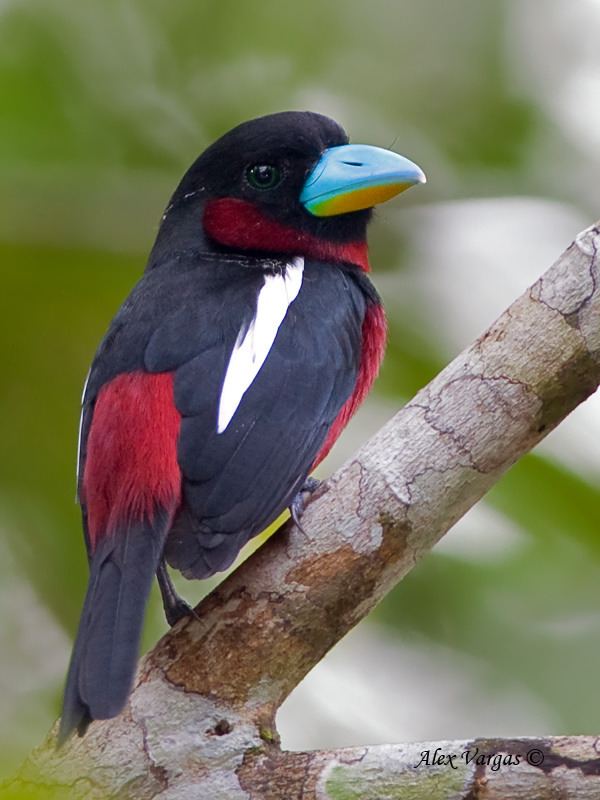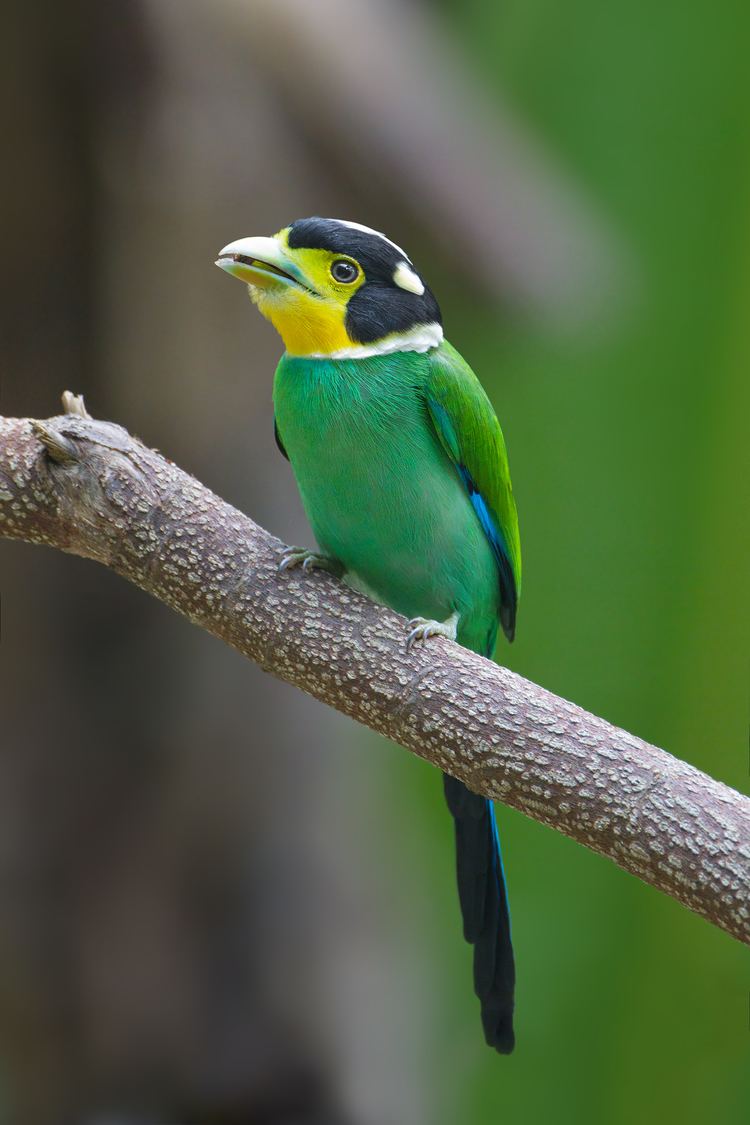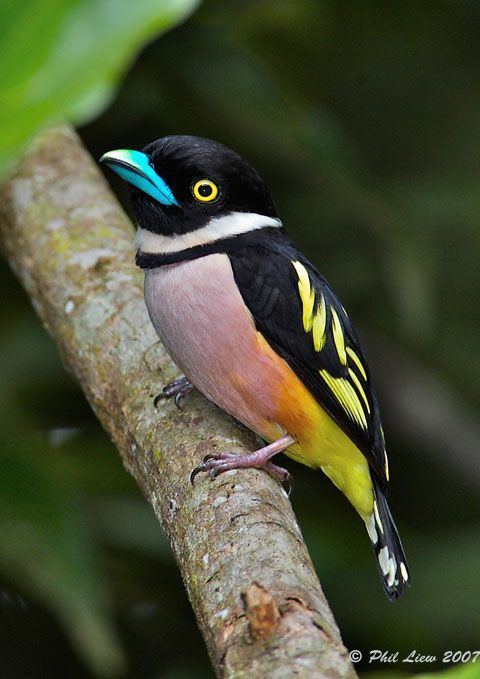Kingdom Animalia Order Passeriformes Scientific name Eurylaimidae Rank Family | Phylum Chordata Suborder Tyranni Higher classification Passerine | |
Similar Bird, Silver‑breasted broadbill, Eurylaimus, Pitta, Passerine | ||
Black yellow broadbill
The broadbills are a clade of small passerine birds, Eurylaimidae (named after the type genus Eurylaimus). The Smithornis and Pseudocalyptomena species occur in sub-Saharan Africa; the rest extend from the eastern Himalayas to Indonesia and the Philippines. The family possibly also includes the sapayoa from the Neotropics and the asities from Madagascar, although many taxonomists now separate each of the three into distinct families.
Contents
- Black yellow broadbill
- Broadbills sing with their wings
- Description
- Behaviour and ecology
- Taxonomy and systematics
- References

Broadbills sing with their wings
Description

Many of the broadbills are brightly coloured birds that present broad heads, large eyes and a hooked, flat and broad beak. They range from 13 to 28 centimetres in length, and live in the dense canopies of wet forests, allowing them to hide despite their brightly coloured plumage. The plumage of the juveniles eurylaimids are similar to those of the adults, differing in being duller and shorter-winged and shorter-tailed in some cases.
Behaviour and ecology

The broadbills are for the most part insectivorous and carnivorous. Prey taken include insects, spiders, centipedes, and millipedes, as well as lizards and tree frogs. Prey is obtained by sallying from a perch to snatch it in flight, and gleaning the prey off leaves and branches while flying. Some species may take some fruit, but only the green broadbills of the genus Calyptomena and the Grauer's broadbill are primarily frugivores (which also take some insects as well).

They are generally gregarious, with many species moving about in flocks of about 20 individuals. Broadbills attach their purse-shaped nests to suspended vines, and leave a tail of fibres hanging below it. This gives the nest the appearance of being random debris caught in the tree, an effect further enhanced by the birds covering the nest with lichen and spider webs. Broadbills typically lay two to three eggs.
Taxonomy and systematics

The sapayoa was originally classified in the group Pipridae, according to at least one author, the genus more accurately now suggests its own family. The four species of asities, a family endemic to Madagascar, are sometimes included in the broadbills. It has been suggested that the group is not monophyletic.
Family Eurylaimidae
